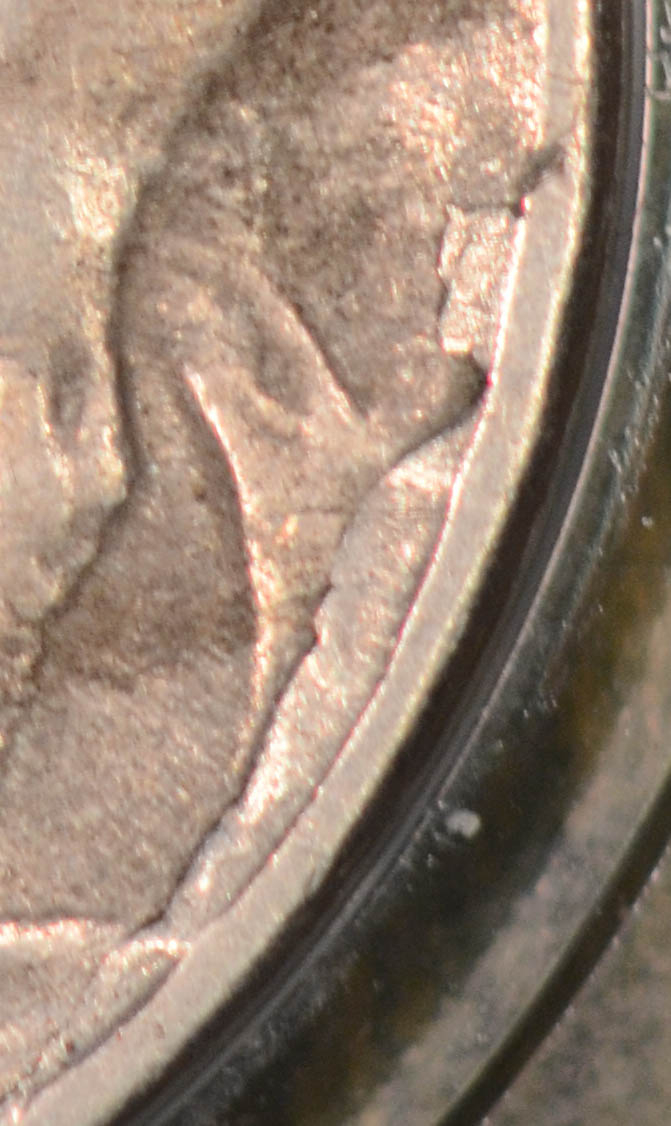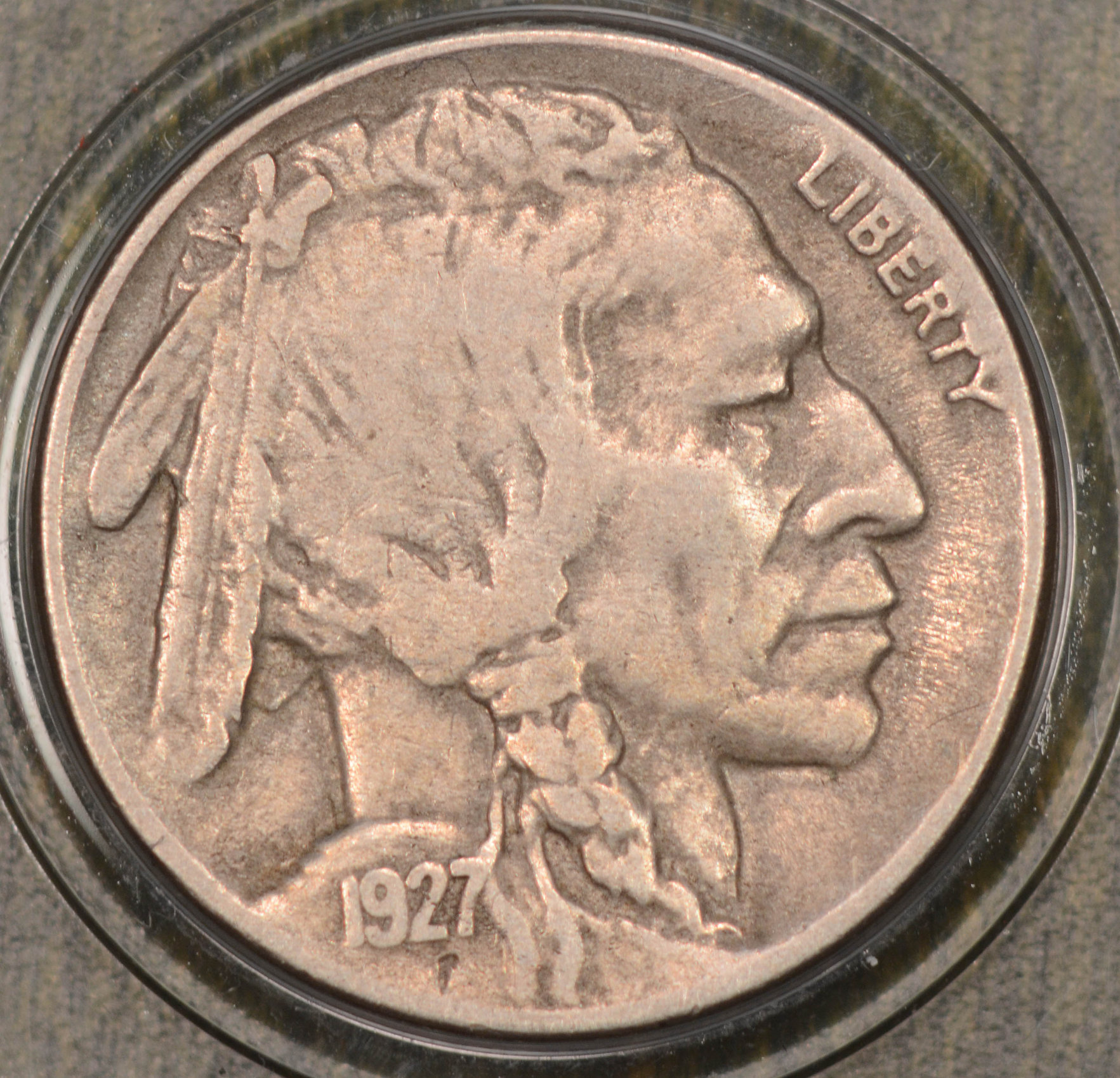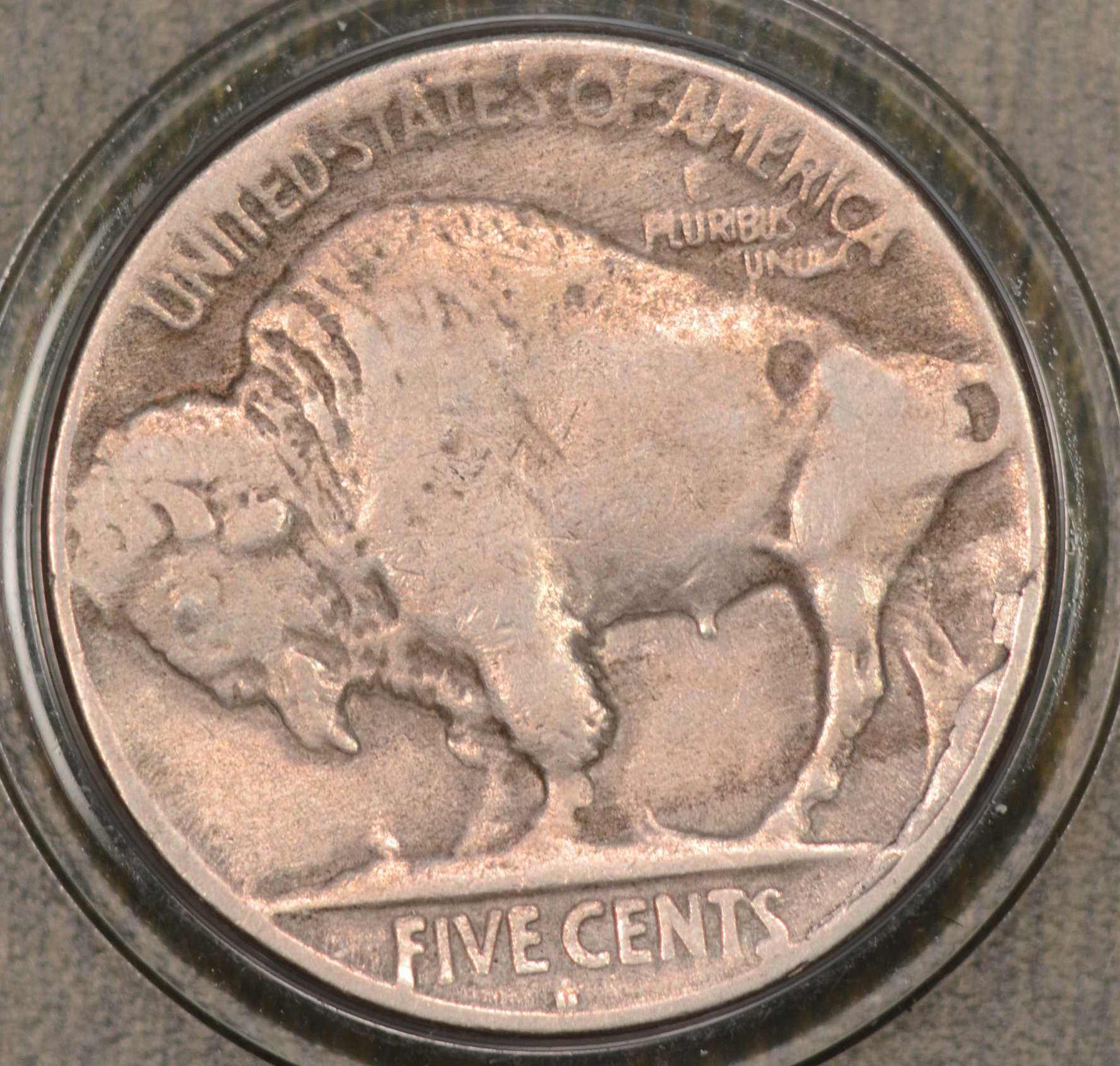Options
Hoping this isn't PMD on my Buffalo nickel
This is the reverse of a better variety that I'm planning to submit but first want to make sure its not PMD. No marks on rim on corresponding area of coin.


Proud recipient of the coveted "You Suck Award" (9/3/10).
0
Comments
It is a die break. Very neat!
Would like to see the whole coin.
Difficult to be sure based on those pictures... either die break or cud... as Jon said, a picture of the entire coin would be helpful.... Cheers, RickO
Let's see the obverse too, LOL
Hard to tell from the pic but I could also see it as a lamination.
Why is that?
Retained cud?
Back that lens off! Way too close a pic.
bob
@grip said: "Retained cud?"
I agree 100% but I don't know why I made that guess. Please explain what you see to reach your conclusion.
Did not include the rim...just guessing.
AS requested, thanks to all.


1927-D 3 1/2 Leg. I can see why you want to know what's going on with the coin. My opinion is that it is not PMD. It looks to be lamination. I say that because the area in question looks raised from the surface......kind of "flaky" looking.
Wouldn't a Cud take out the rim? Now I ain't so good at the finer details of this specimen, (Cud or no Cud) so maybe I should just keep my mouth shut.
Pete
Looks like a fresher delamination from when the coin was exposed to or treated with an acidic chemical.
The surfaces have a mild acid etched appearance.
An excellent example of the variety. Coin looks fine to me. I don't quite know what the rim disturbance is.
Possibly a rim burr.
IMO, we have a coin with a large rim break. I reached this conclusion because as I followed the rim from 5 on up to 3. The area of the rim is raised. There can only be two things this can be. A die break or a lamination. Based on the way the "area" looks raised from the flat rim it looked like a break. After viewing the new images, it is more likely a lamination as a break this size should be mentioned with the variety.
All the owner needs to do is to tip the coin up and see if there is a seam = lamination. No seam = cud.
it is a cud
BHNC #203
Actually does look like an interior rim cud now looking at it not on my phone screen.
Because it looks like a lamination!
NOT good enough! The moon looks like a face!
Can you show the area that convinces you? I think the SHARP, "square" section near the upper part of the "XXX" is more like a lamination. The OP can tell us when he tips the coin. Only bad thing is there is no evidence of a split on the edge.
Look at the very top of the affected area...especially in the 1st pictures! Especially the rim.
That's **exactly" what made me think a rim break in my original post. The rim is flat and then abruptly raised as planchet metal dropped into the void in the die.
@OnWithTheHunt Is the metal near the rim peeling away or solid. Only you can resolve this. BTW, the coin looks like it is already in a slab.
First thing that came to mind is cud.
I agree, a die break that isn't yet a cud (the piece of die does have to fully break off to be a cud, right?) but does extend through the rim on both ends of the crack
Collector, occasional seller
"Extra" metal appears raised to my eye, like a very thin sheet over that section of coin. Then there is a clear differentiaton from the "sheet" to the rim, as shown in photo. Hope that helps. Wish I could be more specific or provide a more magnified picture, but the 55mm I used for lens stacking pix is non-functional. Again, thanks to all for your comments.
All you need to do is to tilt the slab at an angle and see if there is a dark shadow between the normal surface of the coin and the top of the lump. If this is what you see, "Extra" metal appears raised to my eye, like a very thin sheet over that section of coin, your coin is LAMINATED! mystery solved.
@amwldcoin got it right in the beginning.
I will stick with rim burr. A rim burr happens when the upsetting mill scrapes some metal off of the "corner" of a blank and schmears it over the adjacent surface of the now planchet. If it stays on and gets struck down into the coin it can later separate and look for all intents and purposes like a lamination.
TD
I don't think it is any sort of die break/crack.
I think it is a partial delamination (retained flap).
An actual cud would not show the inside edge of the rim in the area affected by the cud (see red dashed line):

thats what I was thinking common on nickels
Exactly...just lazy with the keyboard here!
https://forums.collectors.com/discussion/989341/1865-indian-cent-reverse-cud#latest
Collector, occasional seller
Don't know why you quoted me with that link...but the linked coin is definitely a Cud!
Was going to just quote Dan Carr but decided to grab your quote which grabs his quote as well. Since he stated that a cud would not show the inside of the rim and there just so happens to be another thread here today about a cud with a large portion of the inside of the rim showing.
Collector, occasional seller
Yes, that one does show some of the inside rim. But not exactly where the cud meets the rim.
I also agree with lamination and will show another coin as an example
above the Jefferson dome - flaking is shown near P mintmark
and further above near the S in pluribus, the lamination goes up through the rim edge
back to the coin in question, I do not know how to submit to get a grade -laminations het details grades unless under error service, so do you need to submit error and also variety? to get a grade and 3 1/2 leg?
You anticipated my next question. Will it straight grade and how should I submit it to avoid a details or genuine notation?
Mornin' - Imo, not a cud, not a retained cud.
It's either a lamination or more probably a rim burr,
mentioned by the Capt.